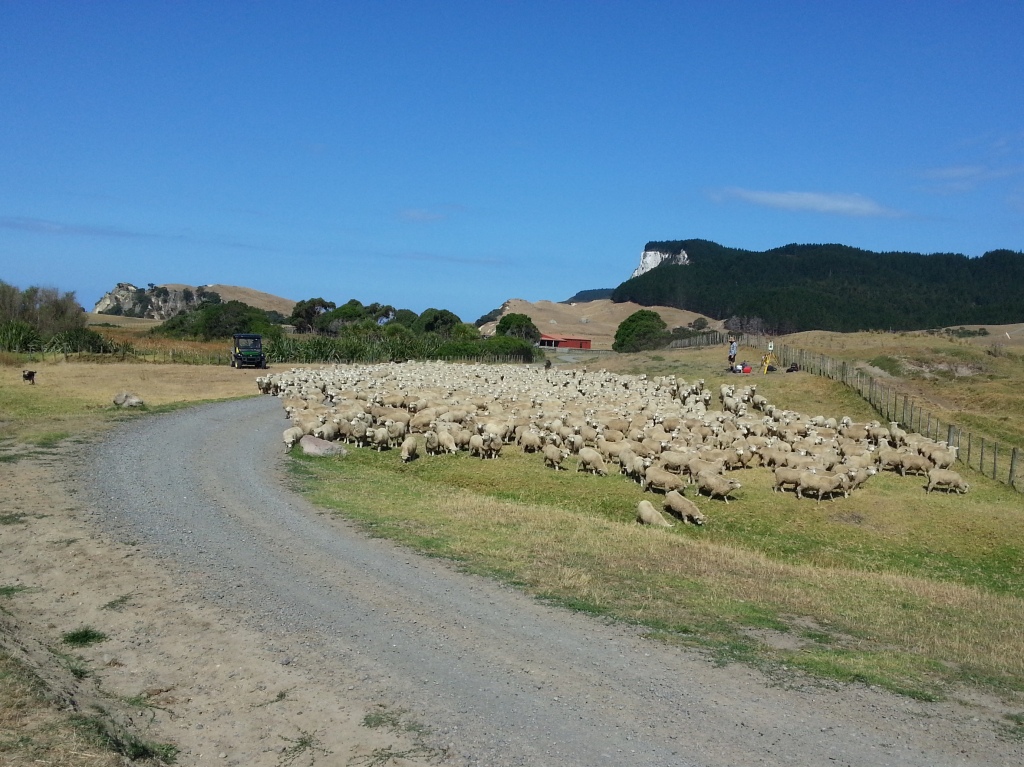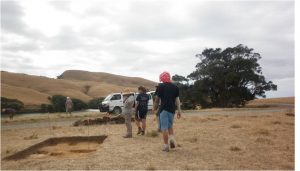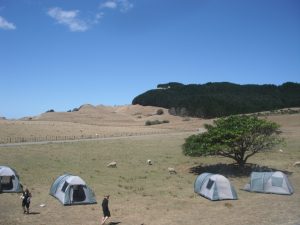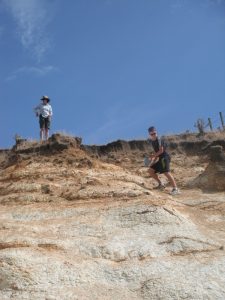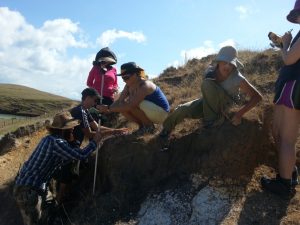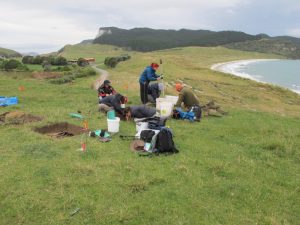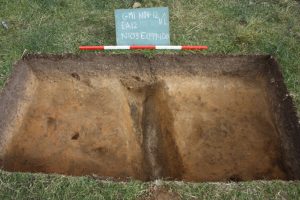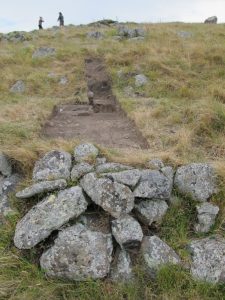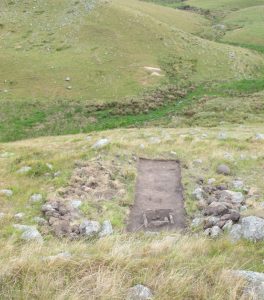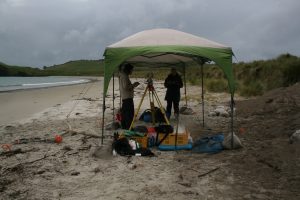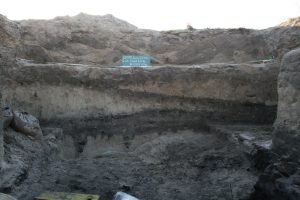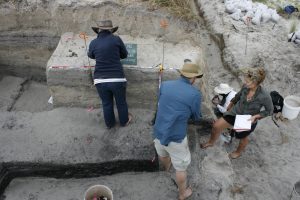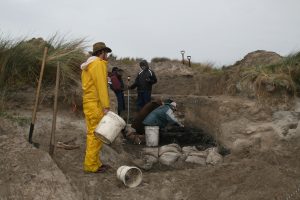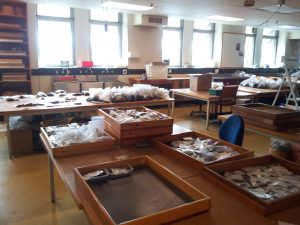So it’s our 5th day in the field today. The view from our worksite is really beautiful, and although it is very dry here has a really amazing, picturesque view with the pristine waters surrounding us, the stepped pas and the fields. Most of our weather has been really bright and sunny, though we have had the occasional shower. Even though we have only been here 5 days we have already slipped into a routine of work, early mornings, early evenings (speak for yourself, Rochelle!) and eagerly daydreaming about swimming away all the dirt. We’ve all been finding it a bit tedious getting up at 6.30-6.45am to slather ourselves in sunscreen and get in nice and early for breakfast before being on site, ready to go, at 8am. We (Rochelle and Emma – HI EVERYONE!) had previously been on the “Extreme Team” marking and recording artefacts coming out of a heavily eroded slope which we thought was hard enough on the body, but yesterday we began our work in the excavation squad. When we were watching from a distance doing laser scanning or survey from the hillside we never imagined it would be so labour intensive.
The image that previously came to mind when thinking about excavation was someone sitting in a ditch and leisurely chipping away at a bit of soil with some kind of small tool or brush as opposed to arduous. In reality, it’s actually some of the toughest work we’ve ever done. You are literally spending a full working day bent over, breaking your back, and digging through sediment scouring for bits of stone that, unless you know what you are looking for, you would probably usually ignore. We have been finding some incredible artefacts so far, including obsidian flakes, stone flakes and chert cores. The most common find at this stage is fire-cracked rock, and the mere sight of it has become somewhat of a running joke; but really we are very lucky to be finding so many artefacts.
Where does all the extra soil go when we’ve dug it up out of our trench? It goes into large (and exceptionally heavy) buckets to be sieved, where we hope to find even smaller bits of special stones. It is very hard work, and both of us were incredibly tired and sore by the end of our day today, but we have to admit it is the most fun we’ve had in SUCH a long time. It has been a lot of fun to be toiling in the dirt and singing songs, making jokes and light banter, and discussing the wider context of the artefacts and features we are looking at, such as the pit, postholes and drain in our trench.
It is a wonderful feeling to have a cool swim in the beach that is literally right behind us. It’s funny seeing all the people with their yachts come and stay the day while we are up on the hill, intent on our work. We have also enjoyed watching the cute sheep get herded around by the dogs, and we have to temporarily stop work to guard our work areas and equipment. It was hilarious to watch from the hill top as a whole flock of sheep surrounded Joe below us as he protected the Total Station and just stare at him. Looking back at the time we’ve spent so far we are realising just how much we’ve learnt already, and listening to our lectures makes us realise just how much we have to learn, and will probably continue to learn for a long time. There really are very few people who have the opportunity to participate in this kind of activity, and there are even fewer who are able to roll around in the dirt all day, not shower for days (and days, and days, and days…) and not have to experience the strange stares of passers-by. As you can see below, Emma decided to take advantage…
Here’s to another day at the office tomorrow!
Emma and Rochelle =D

